Oral dextrose gel to prevent hypoglycaemia in at-risk neonates
- PMID: 38014716
- PMCID: PMC10683021
- DOI: 10.1002/14651858.CD012152.pub4
Oral dextrose gel to prevent hypoglycaemia in at-risk neonates
Abstract
Background: Neonatal hypoglycaemia is a common condition that can be associated with brain injury. Current practice usually includes early identification of at-risk infants (e.g. infants of diabetic mothers; preterm, small- or large-for-gestational-age infants), and prophylactic measures are advised. However, these measures often involve use of formula milk or admission to the neonatal unit. Dextrose gel is non-invasive, inexpensive and effective for treatment of neonatal hypoglycaemia. Prophylactic dextrose gel can reduce the incidence of neonatal hypoglycaemia, thus potentially reducing separation of mother and baby and supporting breastfeeding, as well as preventing brain injury. This is an update of a previous Cochrane Review published in 2021.
Objectives: To assess the effectiveness and safety of oral dextrose gel in preventing hypoglycaemia before first hospital discharge and reducing long-term neurodevelopmental impairment in newborn infants at risk of hypoglycaemia.
Search methods: We searched CENTRAL, MEDLINE, Embase and Epistemonikos in April 2023. We also searched clinical trials databases and the reference lists of retrieved articles.
Selection criteria: We included randomised controlled trials (RCTs) and quasi-RCTs comparing oral dextrose gel versus placebo, no intervention, or other therapies for the prevention of neonatal hypoglycaemia. We included newborn infants at risk of hypoglycaemia, including infants of mothers with diabetes (all types), high or low birthweight, and born preterm (< 37 weeks), age from birth to 24 hours, who had not yet been diagnosed with hypoglycaemia.
Data collection and analysis: Two review authors independently extracted data and assessed the risk of bias. We contacted investigators to obtain additional information. We used fixed-effect meta-analyses. We used the GRADE approach to assess the certainty of evidence.
Main results: We included two studies conducted in high-income countries comparing oral dextrose gel versus placebo in 2548 infants at risk of neonatal hypoglycaemia. Both of these studies were included in the previous version of this review, but new follow-up data were available for both. We judged these two studies to be at low risk of bias in 13/14 domains, and that the evidence for most outcomes was of moderate certainty. Meta-analysis of the two studies showed that oral dextrose gel reduces the risk of hypoglycaemia (risk ratio (RR) 0.87, 95% confidence interval (CI) 0.79 to 0.95; risk difference (RD) -0.06, 95% CI -0.10 to -0.02; 2548 infants; high-certainty evidence). Evidence from two studies showed that there may be little to no difference in the risk of major neurological disability at two years of age after oral dextrose gel (RR 1.00, 95% CI 0.59 to 1.68; 1554 children; low-certainty evidence). Meta-analysis of the two studies showed that oral dextrose gel probably reduces the risk of receipt of treatment for hypoglycaemia during initial hospital stay (RR 0.89, 95% CI 0.79 to 1.00; 2548 infants; moderate-certainty evidence) but probably makes little or no difference to the risk of receipt of intravenous treatment for hypoglycaemia (RR 1.01, 0.68 to 1.49; 2548 infants; moderate-certainty evidence). Oral dextrose gel may have little or no effect on the risk of separation from the mother for treatment of hypoglycaemia (RR 1.12, 95% CI 0.81 to 1.55; two studies, 2548 infants; low-certainty evidence). There is probably little or no difference in the risk of adverse effects in infants who receive oral dextrose gel compared to placebo gel (RR 1.22, 95% CI 0.64 to 2.33; two studies, 2510 infants; moderate-certainty evidence), but there are no studies comparing oral dextrose with other comparators such as no intervention or other therapies. No data were available on exclusive breastfeeding after discharge.
Authors' conclusions: Prophylactic oral dextrose gel reduces the risk of neonatal hypoglycaemia in at-risk infants and probably reduces the risk of treatment for hypoglycaemia without adverse effects. It may make little to no difference to the risk of major neurological disability at two years, but the confidence intervals include the possibility of substantial benefit or harm. Evidence at six to seven years is limited to a single small study. In view of its limited short-term benefits, prophylactic oral dextrose gel should not be incorporated into routine practice until additional information is available about the balance of risks and harms for later neurological disability. Additional large follow-up studies at two years of age or older are required. Future research should also be undertaken in other high-income countries, low- and middle-income countries, preterm infants, using other dextrose gel preparations, and using comparators other than placebo gel. There are three studies awaiting classification and one ongoing study which may alter the conclusions of the review when published.
Copyright © 2023 The Cochrane Collaboration. Published by John Wiley & Sons, Ltd.
Conflict of interest statement
LR has no interest to declare. She was an independent reviewer who extracted data and assessed bias and certainty of evidence for both included studies.
LL has no interest to declare. She was an independent reviewer who extracted data and assessed bias and certainty of evidence for both included studies.
JA is an author of the included studies (Harding 2021; Hegarty 2016a). She has published opinions in medical journals relevant to the interventions in the work. The studies were funded by Auckland Medical Research Foundation and Health Research Council of New Zealand.
TE is an author of an included study (Harding 2021). The study was funded by Health Research Council of New Zealand (HRC) (grant 15/216) and the Eunice Kennedy Shriver National Institute of Child Health and Human Development (NICHD) of the National Institutes of Health (NIH; grant R01HD091075).
GL has no interest to declare.
JH is an author of the included studies (Harding 2021; Hegarty 2016a). She is the principal investigator of the pre‐hPOD trial and follow‐up studies, funded from: A+ Trust (A+5696); Auckland Medical Research Foundation (1113012); Cure Kids (3537, 3561); Lottery Health Research (241266, 326844); philanthropic donations to the University of Auckland Foundation (F‐ILG‐LRSR); Health Research Council of New Zealand (15/216, 19/690); Gravida, National Centre for Growth and Development (SCH‐14‐14 Hegarty); and Eunice Kennedy Shriver National Institute of Child Health & Human Development, National Institutes of Health (R01HD091075). She is also the principal investigator of the hPOD trial and follow‐up studies, funded from: Health Research Council of New Zealand (13/131, 15/216), Eunice Kennedy Shriver National Institute of Child Health and Human Development, National Institutes of Health (R01HD091075). She received partial salary support for research with results included in this review and during the writing of this review from Eunice Kennedy Shriver National Institute of Child Health and Human Development. She has given multiple lectures and published some review articles which relate to the material included in this review, none directly reporting the contents of the review.
Figures
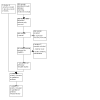
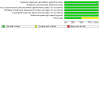
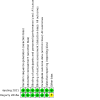
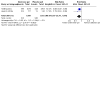
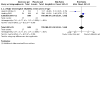
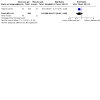


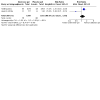

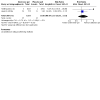
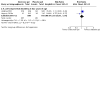
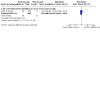
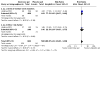
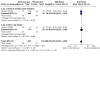
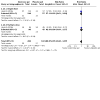
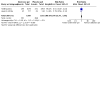
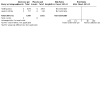
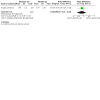
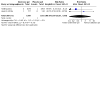
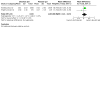
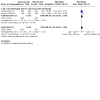
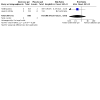
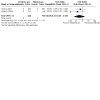
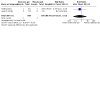
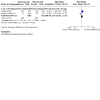
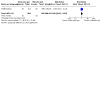
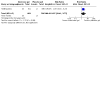
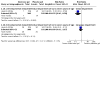
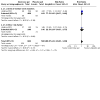
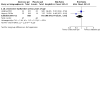
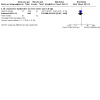
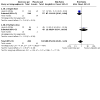
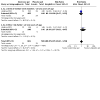
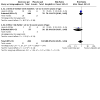
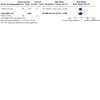
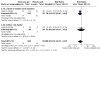
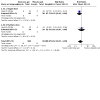
Update of
-
Oral dextrose gel to prevent hypoglycaemia in at-risk neonates.Cochrane Database Syst Rev. 2021 May 17;5(5):CD012152. doi: 10.1002/14651858.CD012152.pub3. Cochrane Database Syst Rev. 2021. Update in: Cochrane Database Syst Rev. 2023 Nov 28;11:CD012152. doi: 10.1002/14651858.CD012152.pub4. PMID: 33998668 Free PMC article. Updated.
Similar articles
-
Oral dextrose gel for the treatment of hypoglycaemia in newborn infants.Cochrane Database Syst Rev. 2022 Mar 18;3(3):CD011027. doi: 10.1002/14651858.CD011027.pub3. Cochrane Database Syst Rev. 2022. PMID: 35302645 Free PMC article.
-
Different corticosteroids and regimens for accelerating fetal lung maturation for babies at risk of preterm birth.Cochrane Database Syst Rev. 2022 Aug 9;8(8):CD006764. doi: 10.1002/14651858.CD006764.pub4. Cochrane Database Syst Rev. 2022. PMID: 35943347 Free PMC article.
-
Drugs for preventing postoperative nausea and vomiting in adults after general anaesthesia: a network meta-analysis.Cochrane Database Syst Rev. 2020 Oct 19;10(10):CD012859. doi: 10.1002/14651858.CD012859.pub2. Cochrane Database Syst Rev. 2020. PMID: 33075160 Free PMC article.
-
Antenatal corticosteroids prior to planned caesarean at term for improving neonatal outcomes.Cochrane Database Syst Rev. 2021 Dec 22;12(12):CD006614. doi: 10.1002/14651858.CD006614.pub4. Cochrane Database Syst Rev. 2021. PMID: 34935127 Free PMC article.
-
Systemic pharmacological treatments for chronic plaque psoriasis: a network meta-analysis.Cochrane Database Syst Rev. 2021 Apr 19;4(4):CD011535. doi: 10.1002/14651858.CD011535.pub4. Cochrane Database Syst Rev. 2021. Update in: Cochrane Database Syst Rev. 2022 May 23;5:CD011535. doi: 10.1002/14651858.CD011535.pub5. PMID: 33871055 Free PMC article. Updated.
Cited by
-
Formulation, Quality Control and Stability Study of Pediatric Oral Dextrose Gel.Pharmaceuticals (Basel). 2025 Feb 3;18(2):204. doi: 10.3390/ph18020204. Pharmaceuticals (Basel). 2025. PMID: 40006018 Free PMC article.
-
Delivery room dextrose gel for preterm hypoglycaemia (the GEHPPI study): a randomised placebo-controlled trial.Arch Dis Child Fetal Neonatal Ed. 2025 Apr 17;110(3):319-325. doi: 10.1136/archdischild-2024-327313. Arch Dis Child Fetal Neonatal Ed. 2025. PMID: 39515988 Free PMC article. Clinical Trial.
-
Improved visual outcomes of central retinal artery occlusion with local intra-arterial fibrinolysis beyond the conventional time window.J Thromb Thrombolysis. 2024 Mar;57(3):503-511. doi: 10.1007/s11239-023-02927-2. Epub 2023 Dec 19. J Thromb Thrombolysis. 2024. PMID: 38114857
-
Exploring the long-term impacts of neonatal hypoglycemia to determine a safe threshold for glucose concentrations.Eur J Pediatr. 2025 Mar 22;184(4):263. doi: 10.1007/s00431-025-06082-z. Eur J Pediatr. 2025. PMID: 40119223 Free PMC article. Review.
-
Improving blood glucose in late preterm and small for gestational age infants: the use of dextrose 40% gel.Front Pediatr. 2025 Jun 24;13:1591567. doi: 10.3389/fped.2025.1591567. eCollection 2025. Front Pediatr. 2025. PMID: 40630713 Free PMC article.
References
References to studies included in this review
Harding 2021 {published and unpublished data}
-
- ACTRN12614001263684. hPOD - Hypoglycaemia Prevention in newborns with Oral Dextrose. anzctr.org.au/Trial/Registration/TrialReview.aspx?id=367361&isReview... (first received 17 november 2014). [ANZCTR TRIAL REGISTRATION: https://www.anzctr.org.au/Trial/Registration/TrialReview.aspx?id=367361]
-
- Edwards T, Alsweiler JM, Crowther CA, Edlin R, Gamble GD, Hegarty JE, et al. Two-year outcomes after prophylactic oral dextrose gel: the hypoglycaemia prevention with oral dextrose (hpod) randomised trial. Journal of Paediatrics and Child Health 2022;58:157-9. [DOI: 10.1111/jpc.15947] - DOI
-
- Harding JE, Hegarty JE, Crowther CA, Edlin R, Gamble GD, Alsweiler JM, hPOD Study Group. Evaluation of oral dextrose gel for prevention of neonatal hypoglycemia (hPOD): A multicenter, double-blind randomized controlled trial. PLoS Medicine 2021;18(1):e1003411. [DOI: 10.1371/journal.pmed.1003411] [PMID: ] - DOI - PMC - PubMed
Hegarty 2016a {published and unpublished data}
-
- ACTRN12613000322730. Hypoglycaemia prevention in newborns with oral dextrose: the dosage trial [In newborn infants at risk of hypoglycaemia does prophylactic oral dextrose gel compared to placebo reduce the incidence of hypoglycaemia (any blood glucose concentration < 2.6 mM)]. trialsearch.who.int/Trial2.aspx?TrialID=ACTRN12613000322730 (first received 22 March 2013). [CENTRAL: CN-02443606]
-
- Griffith RJ, Hegarty JE, Alsweiler JM, Gamble GD, May R, McKinlay CJ, et al. Two-year outcomes after dextrose gel prophylaxis for neonatal hypoglycaemia. Archives of Disease in Childhood - Fetal and Neonatal Edition 2021;206(3):278-85. [DOI: 10.1136/archdischild-2020-320305] [PMID: ] - DOI - PMC - PubMed
-
- Hegarty JE, Harding JE, Gamble GD, Crowther CA, Edlin R, Alsweiler JM. Preventing neonatal hypoglycaemia with oral dextrose gel: a randomised controlled trial. Journal of Perinatal Medicine. Abstracts 12th World Congress of Perinatal Medicine; 2015 November 3 - 6; Madrid 2015;43(s1):O-0119. [DOI: 10.1515/jpm-2015-2002] - DOI
-
- Hegarty JE, Harding JE, Gamble GD, Crowther CA, Edlin R, Alsweiler JM. Prophylactic oral dextrose gel for newborn babies at risk of neonatal hypoglycaemia: a randomised controlled dose-finding trial (the Pre-hPOD Study). PLOS Medicine 2016;13(10):e1002155. [DOI: 10.1371/journal.pmed.1002155] [PMID: ] - DOI - PMC - PubMed
References to studies excluded from this review
Bourchier 1992 {published data only}
-
- Bourchier D, Weston P, Heron P. Hypostop for neonatal hypoglycaemia. New Zealand Medical Journal 1992;105(926):22. [PMID: ] - PubMed
Burch 2021 {published data only}
-
- Burch J, Tort S. What are the effects of oral dextrose for preventing hypoglycemia in at‐risk neonates? Cochrane Clinical Answers 2021. [DOI: 10.1002/cca.3727] - DOI
Coors 2018 {published data only}
-
- Hagan J, Coors SM, Cousin J, Kaiser JR. Prophylactic dextrose gel does not prevent neonatal hypoglycemia: a pilot study. In: Pediatric Academic Societies Annual Meeting; 2017 May 06 - 09. San Francisco (CA), 2017. - PubMed
-
- NCT02523222. Prophylactic dextrose gel for newborns at high-risk for hypoglycemia. clinicaltrials.gov/show/NCT02523222 (first received 14 August 2015). [CENTRAL: CN-02033884]
Gupta 2022 {published data only}
Retbi 2013 {published data only}
-
- Retbi J-M. Glucose gel for hypoglycaemia in the newborn. Soins Pediatrie, Puericulture 2013;275:8. [PMID: ] - PubMed
Van Loghum 2014 {published data only}
-
- Van Loghum BS. Oral dextrose gel is effective in the treatment of neonatal hypoglycemia [Orale dextrose-gel is effectief in de behandeling van neonatale hypoglykemie]. Tijdschrift Voor Kindergeneeskunde 2014;82:147-8. [DOI: 10.1007/s12456-014-0029-2] - DOI
References to studies awaiting assessment
CTRI/2017/11/010645 {published data only}
-
- CTRI/2017/11/010645. Prevention of low blood sugar by 40% oral dextrose gel in newborn infant of diabetic mother [Role of 40% oral dextrose gel on prevention of hypoglycemia in newborn Infants of Diabetic Mother (IDM). A randomized controlled trial]. who.int/trialsearch/Trial2.aspx?TrialID=CTRI/2017/11/010645 (first received 27 November 2017). [CENTRAL: CN-01887712]
NCT04185766 {published data only}
-
- NCT04185766. Prevention of hypoglycaemia by oral 40% destrogel [Use of oral 40% destrogel to prevent hypoglycaemia in late‐term births and SGA or LGA term newborns]. clinicaltrials.gov/show/NCT04185766 (first received 4 December 2019). [CENTRAL: CN-02052900]
TCTR20190805003 {published data only}
-
- TCTR20190805003. Oral dextrose gel for management of neonates at risk for hypoglycemia. who.int/trial2.aspx?TrialID=TCTR20190805003 (first received 3 August 2019). [CENTRAL: CN-02071790]
References to ongoing studies
NCT04353713 {published data only}
-
- NCT04353713. Gel for early hypoglycaemia prevention in preterm infants (GEHPPI) [Oral dextrose gel to prevent early hypoglycaemia in very preterm infants]. clinicaltrials.gov/ct2/show/NCT04353713 (first received 20 April 2020). [CENTRAL: CN-02103289]
Additional references
Achoki 2010
Adamkin 2011
Agrawal 2000
Alkalay 2005
BAPM 2017
-
- British Association of Perinatal Medicine (BAPM). Identification and Management of Neonatal Hypoglycaemia in the Full Term Infant – A Framework for Practice. bapm.org/resources/40-identification-and-management-of-neonatal-hypoglyc... (accessed 1 May 2023). - PubMed
Becker 2016
Blomquist 1994
Boundy 2016
Burns 2008
Chertok 2009
Cornblath 1965
Cox 2006
-
- Cox SG. Expressing and storing colostrum antenatally for use in the newborn period. Breastfeeding Review 2006;14(3):11-6. [PMID: ] - PubMed
Dalsgaard 2019
-
- Dalsgaard BT, Rodrigo-Domingo M, Kronborg H, Haslund H. Breastfeeding and skin to-skin contact as non-pharmacological prevention of neonatal hypoglycemia in infants born to women with gestational diabetes; a Danish quasi-experimental study. Sexual & Reproductive Healthcare 2019;19:1-8. [DOI: 10.1016/j.srhc.2018.10.003] [PMID: ] - DOI - PubMed
Daskas 2013
de Bruin 2022
-
- Bruin R, Dalen SL, Franx SJ, Ramaswamy VV, Simons SH, Flint RB, et al. The risk for neonatal hypoglycemia and bradycardia after beta-blocker use during pregnancy or lactation: A systematic review and meta-analysis. International Journal of Environmental Research and Public Health 2022;19(9616):1-43. [DOI: 10.3390/ijerph19159616] [PMID: ] - DOI - PMC - PubMed
Deshmukh 2021
Duvanel 1999
Edwards 2022
Eidelman 2012
Forster 2017
-
- Forster DA, Moorhead AM, Jacobs SE, Davis PG, Walker SP, McEgan KM, et al. Advising women with diabetes in pregnancy to express breastmilk in late pregnancy (Diabetes and Antenatal Milk Expressing [DAME]): a multicentre, unblinded, randomised controlled trial. Lancet 2017;389(10085):2204–13. [DOI: 10.1016/S0140-6736(17)31373-9] [PMID: ] - DOI - PubMed
Glasgow 2018
GRADEpro GDT [Computer program]
-
- GRADEpro GDT. Version accessed 24 May 2023. Hamilton (ON): McMaster University (developed by Evidence Prime). Available at gradepro.org.
Gupta 2022
Harris 2012
Harris 2013
Harris 2014
Harris 2020
Hawdon 1993
-
- Hawdon JM, Aynsley-Green A, Bartlett K, Ward Platt MP. The role of pancreatic insulin secretion in neonatal glucoregulation. II. Infants with disordered blood glucose homoeostasis. Archives of Disease in Childhood 1993;68(3 Spec No):280-5. [DOI: 10.1136/adc.68.3_spec_no.280] [PMID: ] - DOI - PMC - PubMed
Hay 2009
-
- Hay WW Jr, Raju TN, Higgins RD, Kalhan SC, Devaskar SU. Knowledge gaps and research needs for understanding and treating neonatal hypoglycemia: workshop report from Eunice Kennedy Shriver National Institute of Child Health and Human Development. Journal of Pediatrics 2009;155(5):612-7. [DOI: 10.1016/j.jpeds.2009.06.044] [PMID: ] - DOI - PMC - PubMed
Higgins 2011
-
- Higgins JP, Altman DG, Sterne JA, editor(s). Chapter 8: Assessing risk of bias in included studies. In: Higgins JP, Churchill R, Chandler J, Cumpston MS, editor(s). Cochrane Handbook for Systematic Reviews of Interventions Version 5.1.0 (updated March 2011). Cochrane, 2011. Available fromhandbook-5-1.cochrane.org.
Higgins 2022
-
- Higgins JP, Li T, Deeks JJ. Chapter 6: Choosing effect measures and computing estimates of effect. In: Higgins JP, Thomas J Chandler J, Cumpston M, Li T, Page MJ, Welch VA, editor(s). Cochrane Handbook for Systematic Reviews of Interventions Version 6.3 (updated February 2022). Cochrane, 2022. Available from training.cochrane.org/handbook.
Kaiser 2015
Kerstjens 2012
Koh 1988
Kurtoglu 2005
Liberati 2009
-
- Liberati A, Altman DG, TetzlaM J, Mulrow C, Gotzsche PC, Ioannidis JP, et al. The PRISMA statement for reporting systematic reviews and meta-analyses of studies that evaluate health care interventions: explanation and elaboration. PLoS Medicine 2009;6(7):e1000100. [DOI: 10.1136/bmj.b2700] [PMID: ] - DOI - PMC - PubMed
Lucas 1988
Lucas 1999
Maayan‐Metzger 2009
McKinlay 2015
McKinlay 2017
-
- McKinlay CJ, Alsweiler JM, Anstice NS, Burakevych N, Chakraborty A, Chase JG, et al, Children with hypoglycemia and their later development (CHYLD) study team. Association of neonatal glycemia with neurodevelopmental outcomes at 4.5 years. JAMA Pediatrics 2017;171(10):972–983. [DOI: 10.1001/jamapediatrics.2017.1579] [PMID: ] - DOI - PMC - PubMed
Moher 2009
Moore 2016
Nadjm 2013
-
- Nadjm B, Mtove G, Amos B, Hildenwall H, Najjuka A, Mtei F, et al. Blood glucose as a predictor of mortality in children admitted to the hospital with febrile illness in Tanzania. American Journal of Tropical Medicine & Hygiene 2013;89(2):232-7. [DOI: 10.4269/ajtmh.13-0016] [PMID: ] - DOI - PMC - PubMed
Narvey 2019
NICE 2008
-
- National Institute for Health and Clinical Excellence (NICE) UK. Diabetes in Pregnancy; March 2008. Available at www.nice.org.uk/guidance/cg63.
Nivins 2022
-
- Nivins S, Kennedy E, Thompson B, Gamble GD, Alsweiler JM, Metcalfe R, et al Children with hypoglycaemia and their later development study group. Associations between neonatal hypoglycaemia and brain volumes, cortical thickness and white matter microstructure in mid-childhood: an MRI study. NeuroImage. Clinical 2022;33:102943. [DOI: 10.1016/j.nicl.2022.102943] [PMID: ] - DOI - PMC - PubMed
RevMan Web 2023 [Computer program]
-
- Review Manager Web (RevMan Web). Version 5.6.0. The Cochrane Collaboration, 2023. Available at revman.cochrane.org.
Salhab 2004
Schünemann 2013
-
- Schünemann H, Brożek J, Guyatt G, Oxman A, editor(s). Handbook for grading the quality of evidence and the strength of recommendations using the GRADE approach (updated October 2013). GRADE Working Group, 2013. Available from gdt.guidelinedevelopment.org/app/handbook/handbook.html.
Shah 2022
-
- Shah R, Dai DWT, Alsweiler JM, Brown GTL, Chase JG, Gamble GD, et al, Children with hypoglycaemia and their later development (CHYLD) study team. Association of neonatal hypoglycemia with academic performance in mid-childhood. JAMA 2022;327(12):1158-70. [DOI: 10.1001/jama.2022.0992] [PMID: ] - DOI - PMC - PubMed
Singhal 1991
-
- Singhal PK, Singh M, Paul VK, Malhotra AK, Deorari AK, Ghorpade MD. A controlled study of sugar-fortified milk feeding for prevention of neonatal hypoglycaemia. Indian Journal of Medical Research 1991;94:342-5. [PMID: ] - PubMed
Singhal 1992
-
- Singhal PK, Singh M, Paul VK, Lamba IM, Malhotra AK, Deorari AK, et al. Prevention of hypoglycemia: a controlled evaluation of sugar fortified milk feeding in small-for-gestational age infants. Indian Pediatrics 1992;29(11):1365-9. [PMID: ] - PubMed
Solimano 2019
Soltani 2012
Spar 1994
Surachaidungtavil 2020
Sweet 1999
UNICEF 2013
-
- UNICEF UK - The Baby Friendly Initiative. Guidance on the development of policies and guidelines for the prevention and management of hypoglycaemia of the newborn; July 2013. Available at www.unicef.org.uk/babyfriendly/wp-content/uploads/sites/2/2010/10/hypo_p....
Weissmann‐Brenner 2012
WHO 1997
-
- World Health Organization. Hypoglycaemia of the newborn; 1997. Available at www.who.int/maternal_child_adolescent/documents/chd_97_1/en/.
WHO 2008
-
- World Health Organization. Indicators for assessing infant and young child feeding practices - part I: definition. 2008. Available at http://whqlibdoc.who.int/publications/2008/9789241596664_eng.pdf?ua=1.
Wight 2021
Willcox 2010
-
- Willcox ML, Forster M, Dicko MI, Graz B, Mayon-White R, Barennes H. Blood glucose and prognosis in children with presumed severe malaria: is there a threshold for 'hypoglycaemia'? Tropical Medicine & International Health 2010;15(2):232-40. [DOI: ] [PMID: ] - PubMed
References to other published versions of this review
Edwards 2021
Hegarty 2016b
-
- Hegarty JE, Harding JE, Crowther CA, Brown J, Alsweiler J. Oral dextrose gel for the prevention of hypoglycaemia in newborn infants. Cochrane Database of Systematic Reviews 2016, Issue 4. Art. No: CD012152. [DOI: 10.1002/14651858.CD012152] - DOI
Publication types
MeSH terms
Substances
Grants and funding
LinkOut - more resources
Full Text Sources
Medical
Miscellaneous

